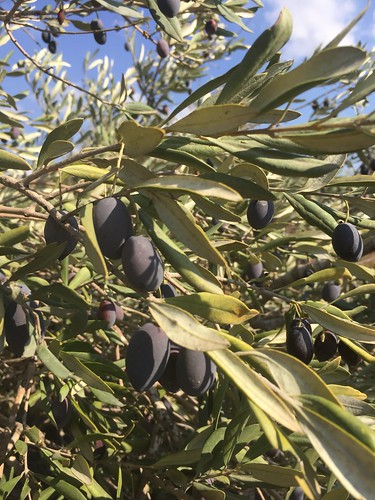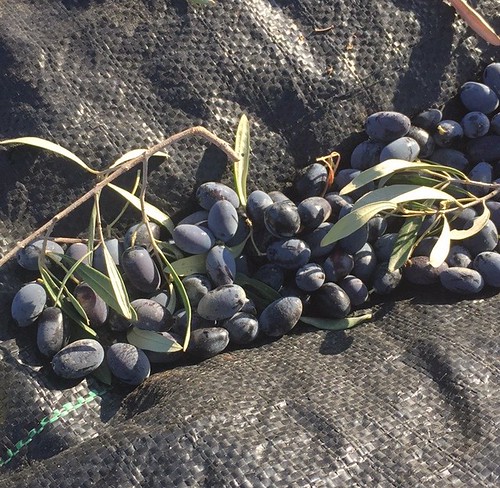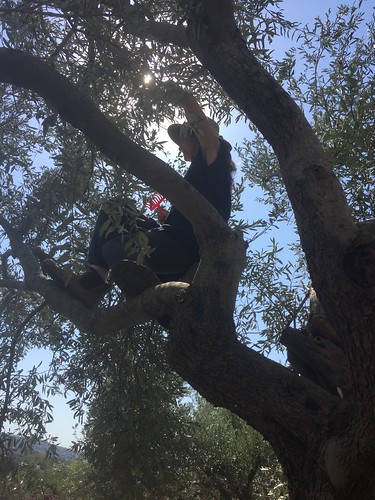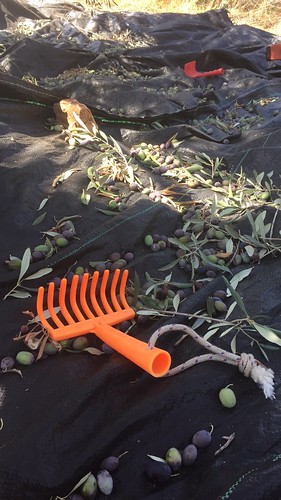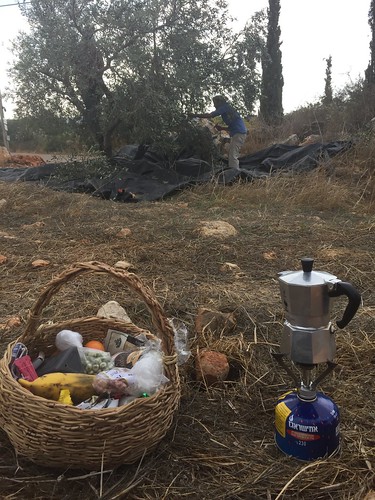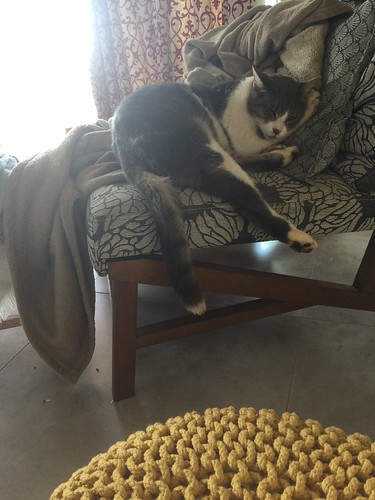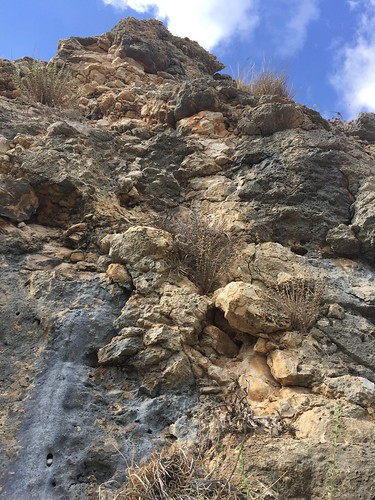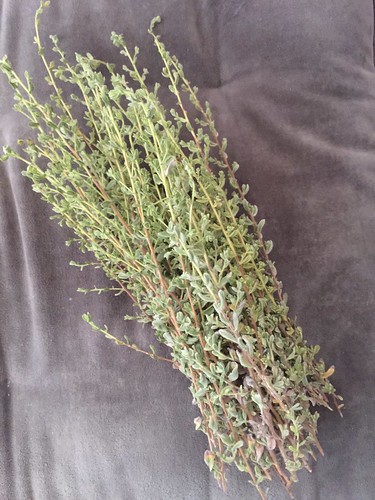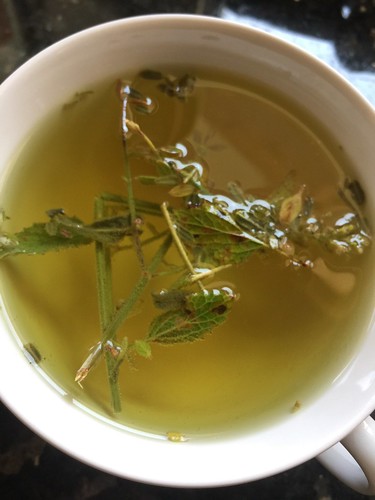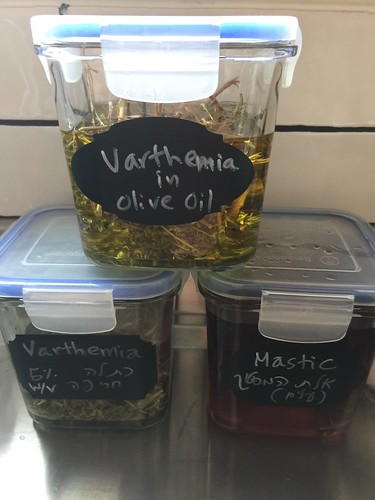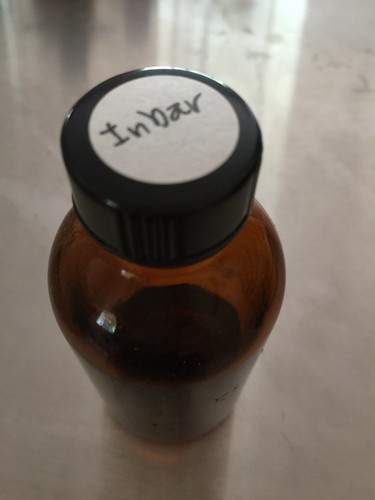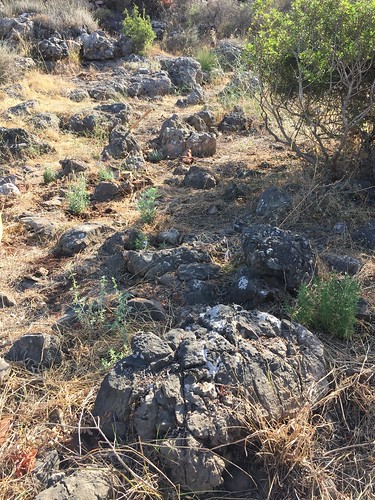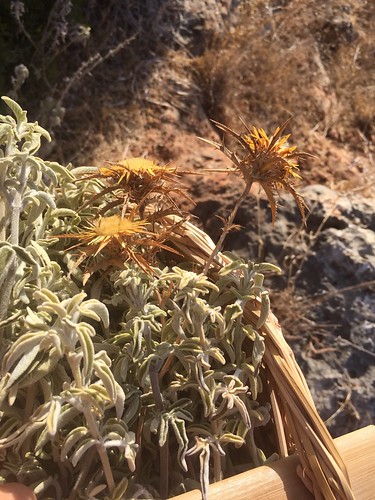
In the harsh summer conditions, certain plants developed a defence mechanism that prevents them from complete dehydration in the long drought conditions. The Three-Lobed Sage (
Salvia fruticosa) is one of them. Naturally, the leaves in the summer produce a different aroma, and seem more concentrated to me. When not covered totally in desert dust, the leaves have a beautiful silvery-yellow-green colour, and are crinkly and "closed". They open in the winter after they get a few gulps of rain; and then will become larger and greener, with the texture turning from dry suede into fresh velvet.
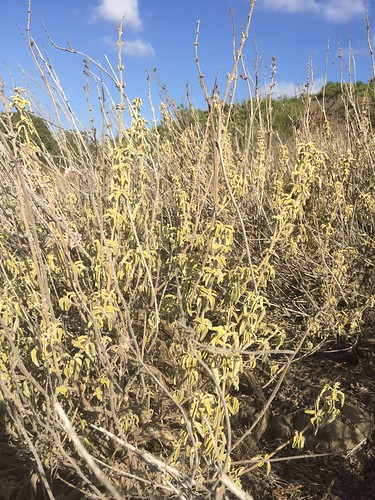
This particular sage (in Hebrew it can be translated literally into "Triangular Sage" because of its leaf made of three sections), shares many similar actions and properties with the garden/common/culinary sage, or as we call it in Hebrew, מרווה רפואית - literally translated as "medicinal sage" (Salvia officinalis), which is native to Europe. Our sage is actually gentler and safer than the latter, especially because of the lower thujone levels. Thujone interfers with the hormonal activity in the female body especially; and also has neorotixic and hallucinogenic influences when used in high dose. Thujone in the wormwood plant is what gives the liquor absinthe its hallucinogenic properties.
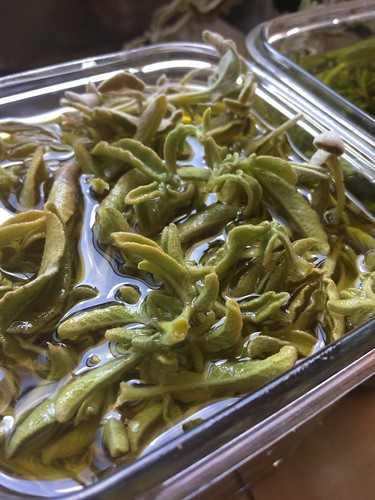
Sage (S. fruticosa) is one of the most valued plants in the region, and so it is only natural that I wanted to include it in one of my concoctions. It is used for myriads of ailments, mostly using its antiseptic, expectorant and "drying" properties to treat colds, and is also an aid for women who wish to wean their babies from nursing - it dries the milk and saves the agony of breast infection in the process. It also helps with menstrual cramps and pain, and in all matter of indigestion. It also helps to clear and prevent Nephrolithiasis (kidney stones) and to fight fungal infections. It helps to calm the nerves, and used to treat headaches (especially as synergy with other local cure-alls such as za'atar and mint, in an oil infusion rubbed onto the temples). It is also used for anxiety and depression - the latter treated by the flowers, a less-known use of the plant.
As for its skin-related properties - it's a valued antimicrobial, astringent, cleansing and purifying plant, which is good against fungal and bacterial infections, but also eczema and psoriasis. Sage tea is excellent rinse for the scalp and will improve colour for dark hair, as well as give a shine and body to it if used instead of a mainstream conditioner.

After I infused the leaves for one month in organic, local, cold-pressed olive oil, I strained the leaves (and composted them, of course).
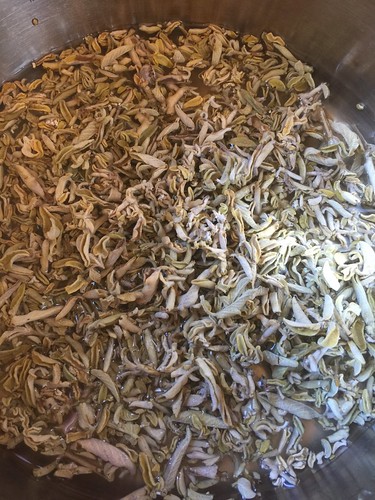
Another batch of leaves I brewed into a very strong tea, and made into ice cubes. If I didn't do that, all the nutrients and plant matter in the tea would get scorched by the caustic soda in the process of making the lye water.

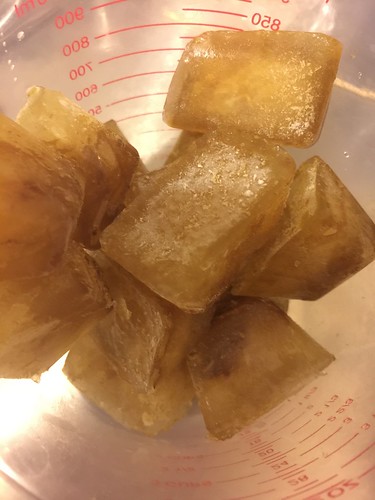
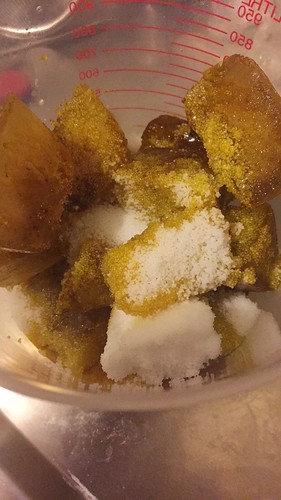
Once the caustic soda comes in contact with the water, a chemical reaction begins to take place, which generates heat very fast, and melts the ice cubes. Because i used only ice cubes, this lowered the temperature of the lye dramatically, which also results in less damage to the oil phase (once these two are mixed together).
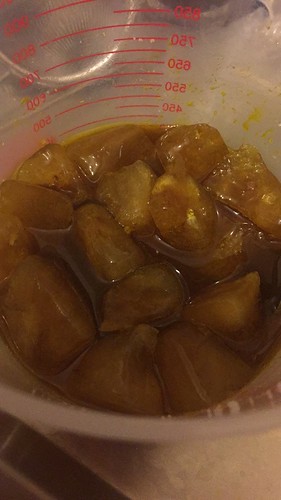
The other oils I used in this particular soap are the same as all my soaps - a winning formula of olive oil, coconut, palm and castor oils. To this I added oil-infusion of myrrh and frankincense resins (added at the very end of the saponification process, which prevents their demolition by the lye), and honey. This was left for 48 hours before unwrapping the moulds (I use 1L milk cartons as my moulds - a great way to reuse something that would have otherwise be thrown directly to the trash; an also saves me miles of wax paper and rinsing and washing).
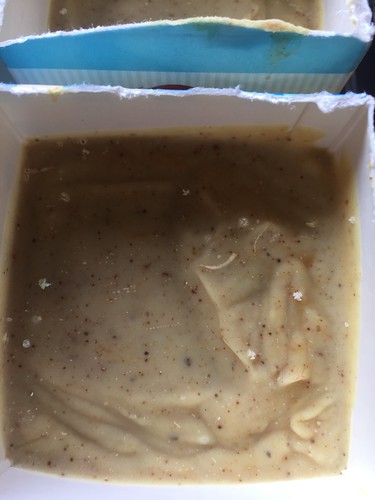
I panicked at first because of the white crystals that formed on the top. I was certain that they were lye flakes that didn't melt. After consulting with my soap mentor, and testing, I was much relieved to learn that they are just soap crystals.
How this soap bar smells was a big surprise to me: it smells almost edible, in an earthy, wholesome kind of way. Not like candy but a little bit like honey cake. If you love a bar of soap that smells sweet and spicy but not in a conventional Christmas candle or cinnamon bun style - this is definitely for you!

The soaps are hand-sliced and left to cure for a month. They will be ready a month later, on November 10th. You can
pre-order them online though - I only have 16 bars so if you love sage and honey and incense, you want to make sure you got one set aside for you!
